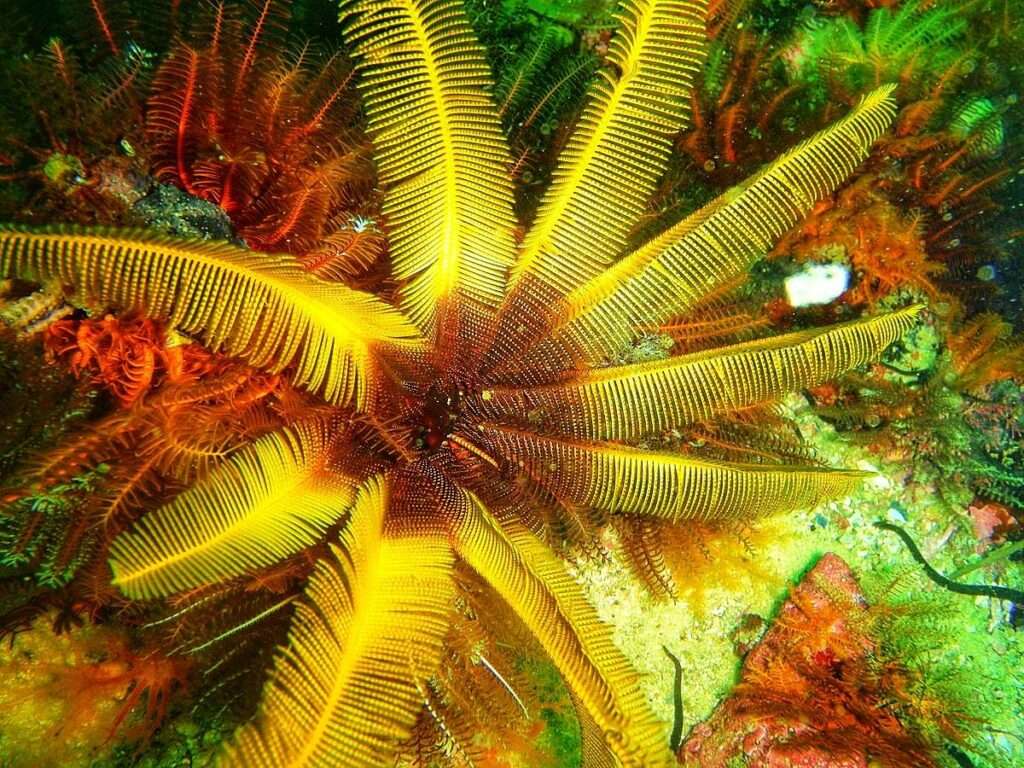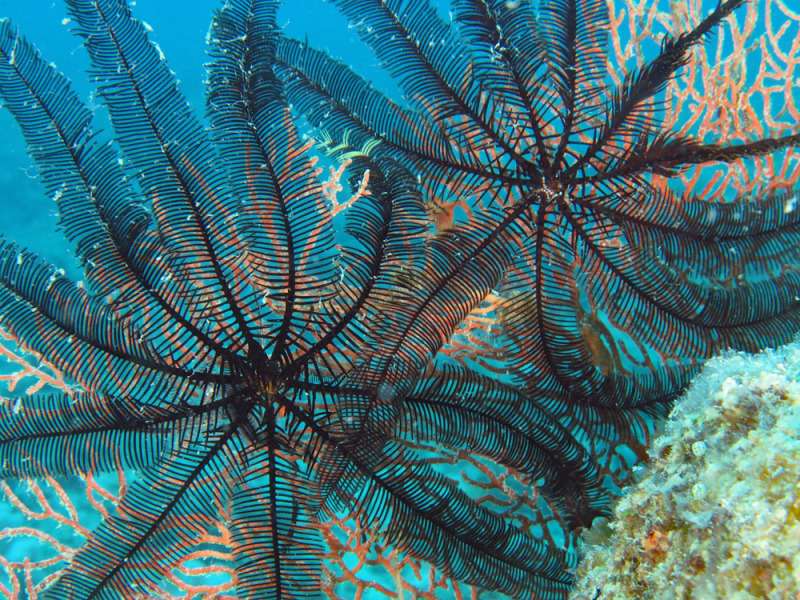
The Comaster schlegelii is a crinoid member blong to the Comatulidae family. It was formerly categorized as Comanthina schlegeli, but additional research revealed that the genus Comaster was a better fit.
Description
The Comaster schlegelii frequently conceals its entire body inside a crevice, leaving only its array of arms exposed, especially when it is young. Although they are divided into multiple arms, the five rays that make up the top of the body are actually linked at the joint. When one of these arms is removed, two more sprout in its place.
The arms may be curled up and are flexible because they are made of several jointed tiny calcareous plates called ossicles. There are two pinnules, or short side branches, on either side of each arm. About twenty cirri, or claw-like appendages, are located on the bottom of the body. These are used to cling to the surface beneath, but older species lose them and instead attach directly utilizing the underarms. The colouring varies greatly; some specimens are plainly light brown, golden yellow, or black, while others are multicoloured, sometimes green with bands of white, black, and orange on the arms and pinnules.
Distribution and habitat
The Comaster schlegelii (variable feather star) is found in the Indo-Pacific shallow seas. Its range encompasses the Japan, Maldives, Fiji, Indonesia, and Papua New Guinea. It occurs most frequently on crests of reef at depths of up to 5 metres (16 feet).

Biology
The variable bushy feather star spreads out its pinnules and arms to feed, just like other feather stars do. Tube feet on the pinnules catch plankton or other organic particles that are drifting by and passed them through ciliated grooves to the mouth.
Each individual feather star is either a male or a female since they are dioecious. On the arms, specialized pinnules that produce gametes are used for external fertilization. Before settling on the ocean floor and developing a stalk-anchored anchoring system, the larvae drift with the plankton and go through a number of developmental phases. The stalk initially remains whole after metamorphosis but soon breaks, allowing the newborn feather star to move about on its own. Even though the variable bushy feather star is occasionally advertised for sale for use in reef aquarium displays, feeding it is challenging, and the majority of aquarium animals eventually die from hunger.
As Pet
Diet
You can feed the aquarium’s particle filter brine shrimp larvae, diatoms and copepods after doing so.
Table





